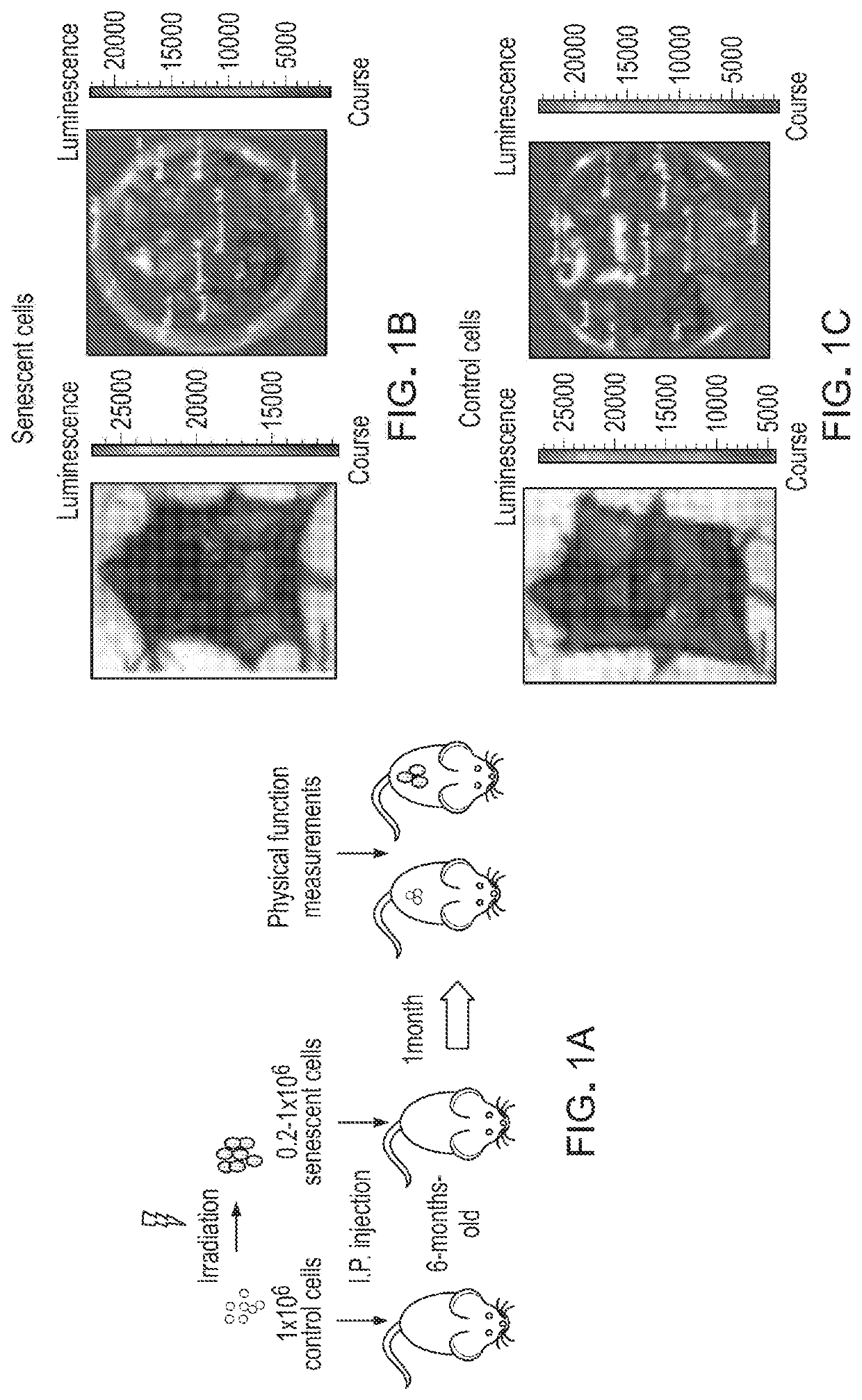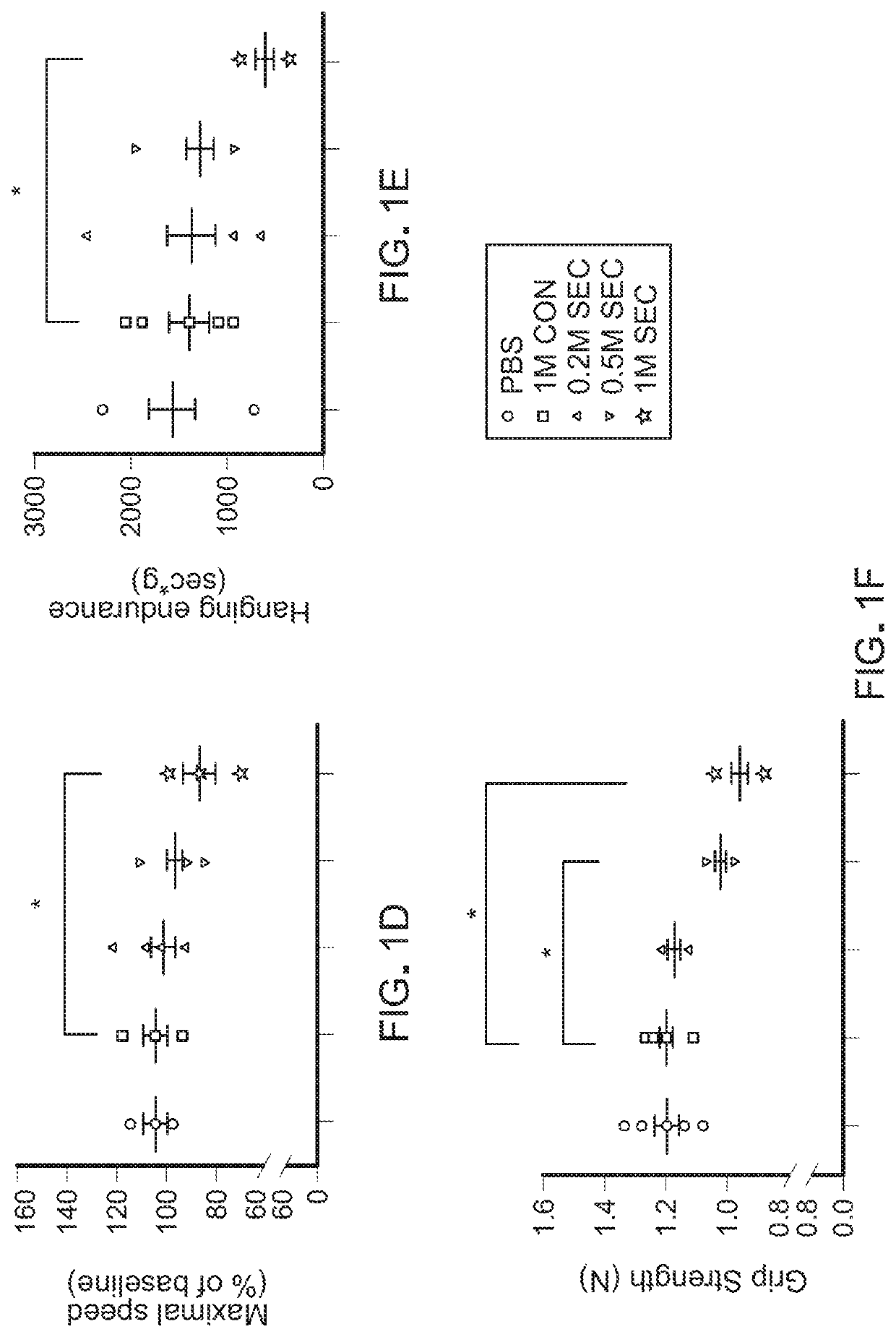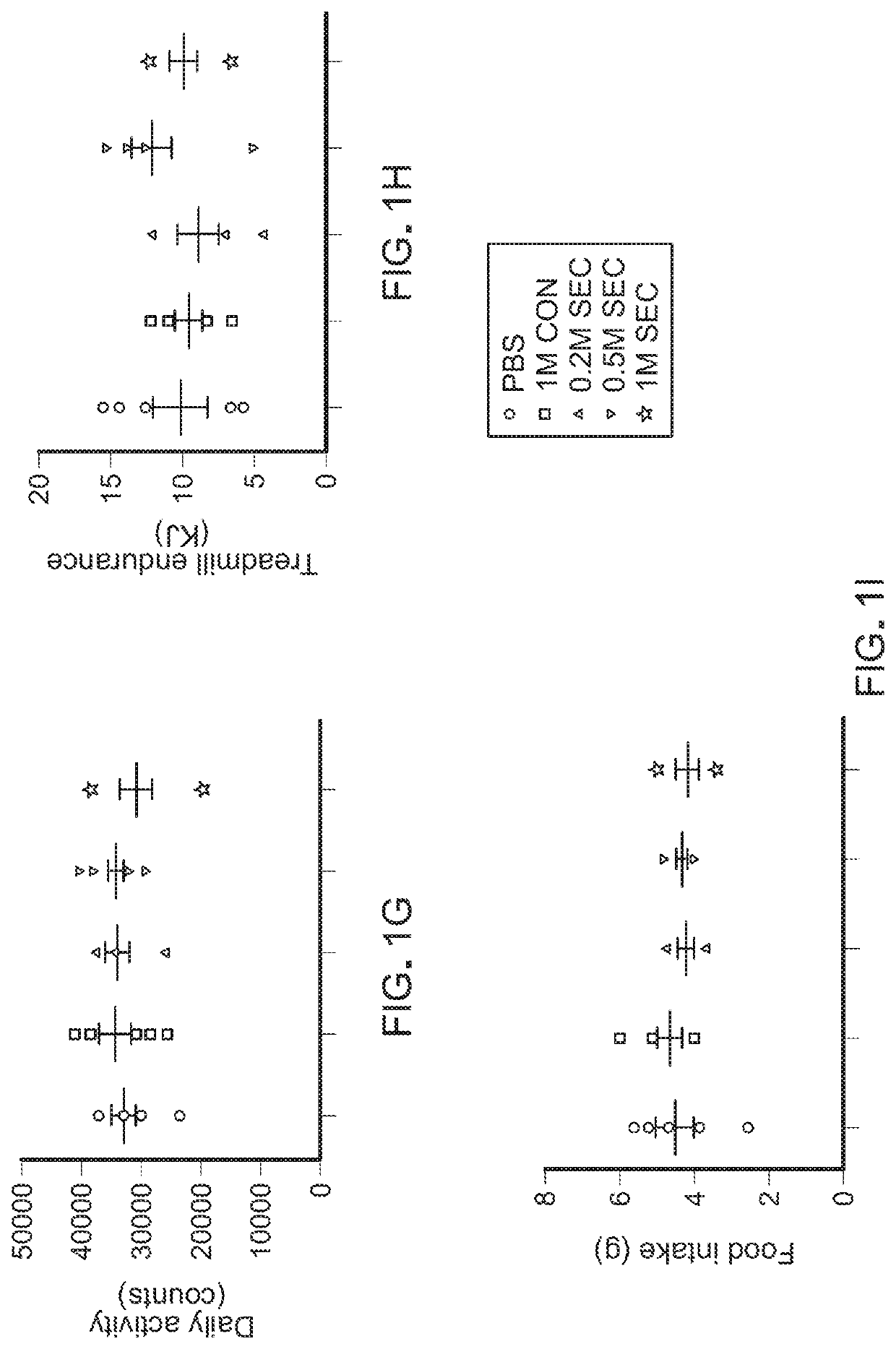Methods and materials for improving transplant outcomes
a technology of transplant outcomes and materials, applied in the direction of antibodies, instruments, immunological disorders, etc., can solve the problems of high discard rate, long waiting time, and increase morbidity and mortality
- Summary
- Abstract
- Description
- Claims
- Application Information
AI Technical Summary
Benefits of technology
Problems solved by technology
Method used
Image
Examples
example 1
s Improve Physical Function and Increase Lifespan in Old Age
[0072]Physical function declines in old age, portending disability, increased health expenditures, and mortality. Cellular senescence, leading to tissue dysfunction, may contribute to these consequences of aging. This example demonstrates that transplanting relatively small numbers of senescent cells into young mice is sufficient to cause persistent physical dysfunction, as well as to spread cellular senescence to host tissues. Transplanting even fewer senescent cells had the same effect in older recipients, accompanied by reduced survival, indicating the potency of senescent cells in shortening health- and life-span. The senolytic cocktail, dasatinib plus quercetin (D+Q), which causes selective elimination of senescent cells, decreased the number of naturally-occurring senescent cells and their secretion of frailty-related pro-inflammatory cytokines in explants of human adipose tissue. Moreover, intermittent oral administr...
example 2
s Improve Survival Following Transplant
[0106]Treating young mice transplanted with hearts from old mice significantly increases survival (FIG. 22). Hearts from old C57BL / 6 mice were transplanted into young DBA / 2J mice w / o immunosuppression. Eight- to 12-week-old wild-type (WT) male DBA / 2J WT male mice were purchased from Charles River Laboratories (Wilmington, Mass.). Eighteen-month-old WT male C57BL / 6 mice were purchased from the National Institute of Aging (NIA, Bethesda, Md.). Using a modified cuff technique, fully vascularized cardiac grafts from either old or young donor mice were heterotopically transplanted into young recipients. Hearts were anastomosed to the recipient's common carotid artery and internal jugular vein. Transplantation into the recipient's cervical region facilitated reliable functional assessment through palpation. Ischemic times were kept consistently at 40 minutes with an anastomosis time of 12 minutes. Graft function was measured daily by palpation, and a...
example 3
Rejuvenation and Accelerating Aging Processes
[0107]In settings where young and old tissues cohabitate, donor cells and recipient environment may have bi-directional effects leading to either rejuvenation or accelerated aging. In this example, aging parabiosis studies and transplant research are juxtaposed. Parabiosis pathways studies may influence organ, tissue, and cell transplantation. Thus, studies refine the efficacy of transplant biology when using old or young organs and discuss specific mechanisms and pathways of relevance. Insights from aging research can inform and accelerate the understanding of transplant biology. Similarly, insights from a wealth of transplant studies may modify thinking in the aging biology field.
Mechanisms of Transferring Proclivity to Aging Processes
Factor-Mediated Contributions
[0108]Candidate circulating mediators that may transfer aging properties include soluble factors, cells, and cellular components (FIG. 23). In addition to soluble signaling fac...
PUM
| Property | Measurement | Unit |
|---|---|---|
| real time PCR | aaaaa | aaaaa |
| molecular weight | aaaaa | aaaaa |
| thick | aaaaa | aaaaa |
Abstract
Description
Claims
Application Information
 Login to View More
Login to View More - R&D
- Intellectual Property
- Life Sciences
- Materials
- Tech Scout
- Unparalleled Data Quality
- Higher Quality Content
- 60% Fewer Hallucinations
Browse by: Latest US Patents, China's latest patents, Technical Efficacy Thesaurus, Application Domain, Technology Topic, Popular Technical Reports.
© 2025 PatSnap. All rights reserved.Legal|Privacy policy|Modern Slavery Act Transparency Statement|Sitemap|About US| Contact US: help@patsnap.com



